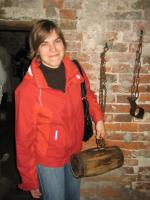Аннотация
We can observe that the amount of non-toy domain ontologies is still
very limited for many areas of interest. In contrast, folksonomies
are widely in use for (1) tagging Web pages (e.g. del.icio.us), (2)
annotating pictures (e.g. flickr), or (3) classifying scholarly publications
(e.g. bibsonomy). However, such folksonomies cannot offer the expressivity
of ontologies, and the respective tags often lack a context-independent
and intersubjective definition of meaning. Also, folksonomies and
other unsupervised vocabularies frequently suffer from inconsistencies
and redundancies. In this paper, we argue that the social interaction
manifested in folksonomies and in their usage should be exploited
for building and maintaining ontologies. Then, we sketch a comprehensive
approach for deriving ontologies from folksonomies by integrating
multiple resources and techniques. In detail, we suggest combining
(1) the statistical analysis of folksonomies, associated usage data,
and their implicit social networks, (2) online lexical resources
like dictionaries, Wordnet, Google and Wikipedia, (3) ontologies
and Semantic Web resources, (4) ontology mapping and matching approaches,
and (5) functionality that helps human actors in achieving and maintaining
consensus over ontology element suggestions resulting from the preceding
steps.
Линки и ресурсы
тэги
сообщество
@michael- тэги данного пользователя выделены
- ontology
- folksonomy
- tagging
- ontologies
- folksonomies
- imported
- toread
- tagging_problems
- folksontology
- tagging_convergence
- 2007
- ezweb
- folksonomy,
- ontology_learning
- ontology_problems
- tagging_efficiency
- diss
- tagging_comparison
- ontologyunderstanding
- ontologyproblems
- ontology,
- imported,
- tag_concept_mapping
- ol_web2.0
- turning
- taggingsurvey
- ol
- integrated
- approach
- 2007dissezwebfolksonomyontologyontology_problemsontologyproblemsontologyunderstandingtagging_comparisontagging_convergencetagging_efficiencytagging_problemstoread
- ontology_engineering
- folksology
- semantics






















